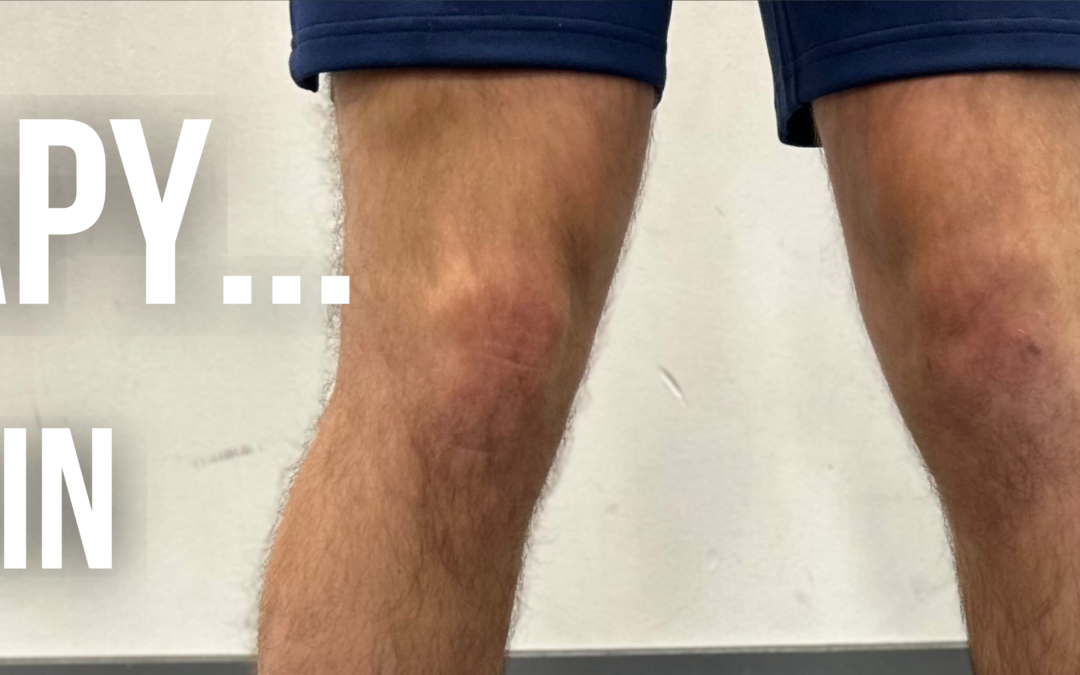Knee pain is a huge and prevalent subject in the world. The knee joint is a complicated joint containing numerous ligaments, tendons, and cartilage. As well as being complicated, it’s expected to absorb lots of force in our daily lives. Because the knee is so complicated, it would take numerous blogs to describe and “fix” every knee issue. This blog will give you a couple of ideas for why you might be experiencing knee pain and some things you can do to help prevent knee problems in the future.
If you are experiencing repeated knee pain and it’s affecting your daily life, speak to a physiotherapist and they will be able to identify the root cause of the issue and prescribe specific exercises/therapy to help you.
Fix your knee buckling!
Often seen in women (but not all) because of the orientation of their hips and knees, knee buckling is when your knees “buckle” inwards (see picture). This usually happens when you walk, land, squat and more. Knee buckling puts enormous pressure on the medial (inside) of your knee. More specifically, putting pressure on the Medial Collateral Ligament (MCL) and the medial meniscus (cartilage).
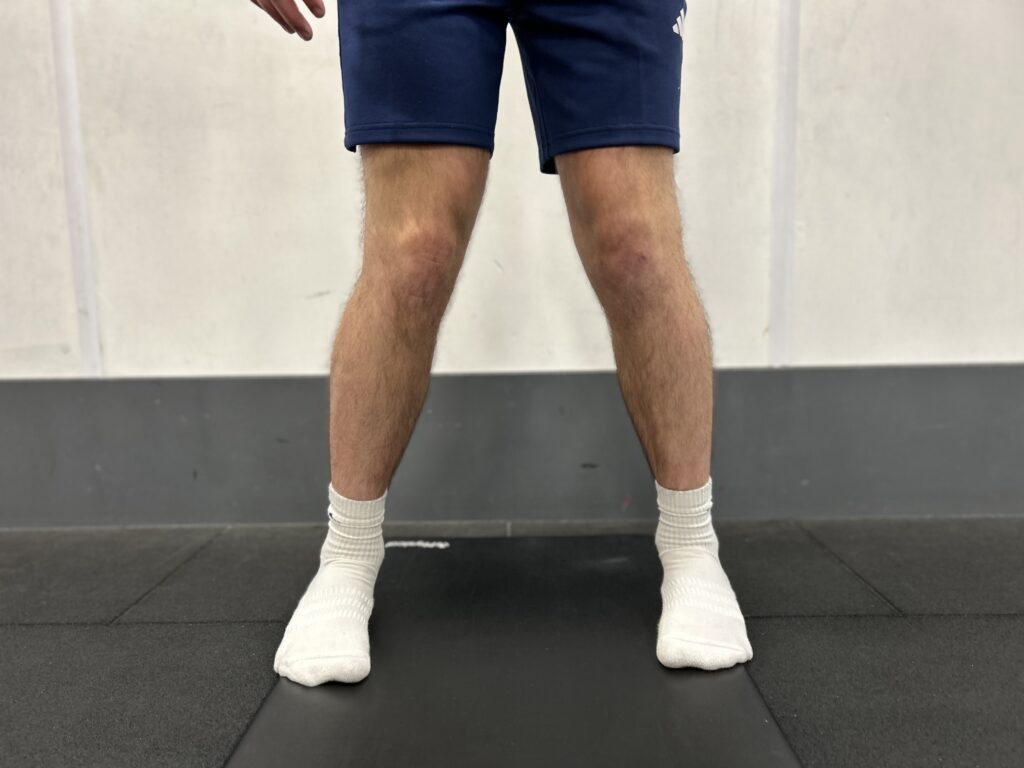
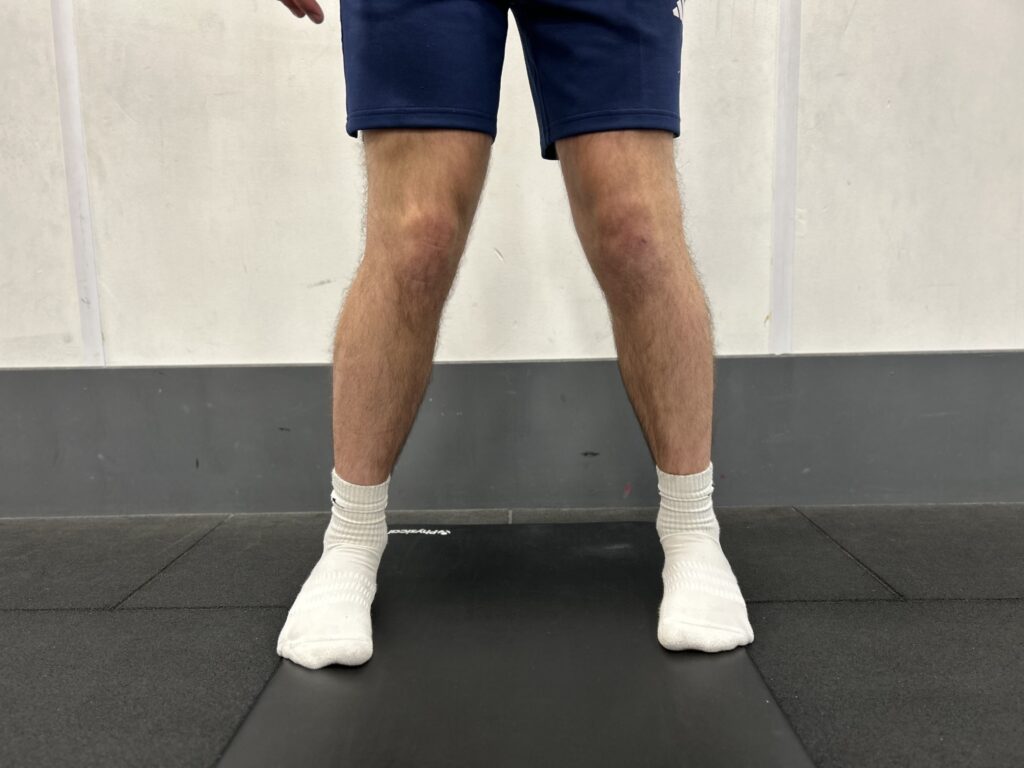
As with many knee issues, the problem often stems from deficiencies/issues/weakness above and below the knee – the whole leg chain! This can be due to weak glutes, tight hips, and flat feet. Check out our Ankle Injuries and Glute Activation blog for some exercises you can start with.
A great and easy way you can start to work on buckling knees is by thinking about how you walk. When you next walk are walking, think about every step you take. Just before your heel touches the floor, I want you to squeeze your glute (your butt). Keep that butt squeezed throughout the step, and this should help brace the knee to accept weight and keep that knee from buckling inwards. As you progress towards the “push off” phase of a step, push through your toes and grip the floor with your feet, using the muscle on the back of your calf to drive yourself forward. By this time your other foot will be almost hitting the ground and you’ll repeat the above. This may feel weird at first but as you do it more often it will become second nature. You can also do this while running, but keep in mind it will be quicker (and harder) and you will spend less time with your heel touching the floor (if any) and more time on your forefoot or toes..
Open out your hips!
It must seem weird that this blog hasn’t even mentioned the quadriceps which actually attach to the knee joint. There is a time and a place for quadricep strengthening as it can be great for tendon strengthening. However, too many people make the mistake of just working on their quads as soon as they experience knee pain – this could make it worse!
The hips are very mobile meaning they are important for any twisting motions at the leg. Having tight and weak hips means our knee takes up the role of these twisting motions – a role it wasn’t designed to do. Mobilising the hips and strengthening them can put that role back on the hips. Consequently, taking unwanted load of the knees.
Here’s an example of a hip mobilisation and hip strength exercise which you can use to open out the hips and strengthen them:
- Kneeling Lateral Hip Flexor Stretch
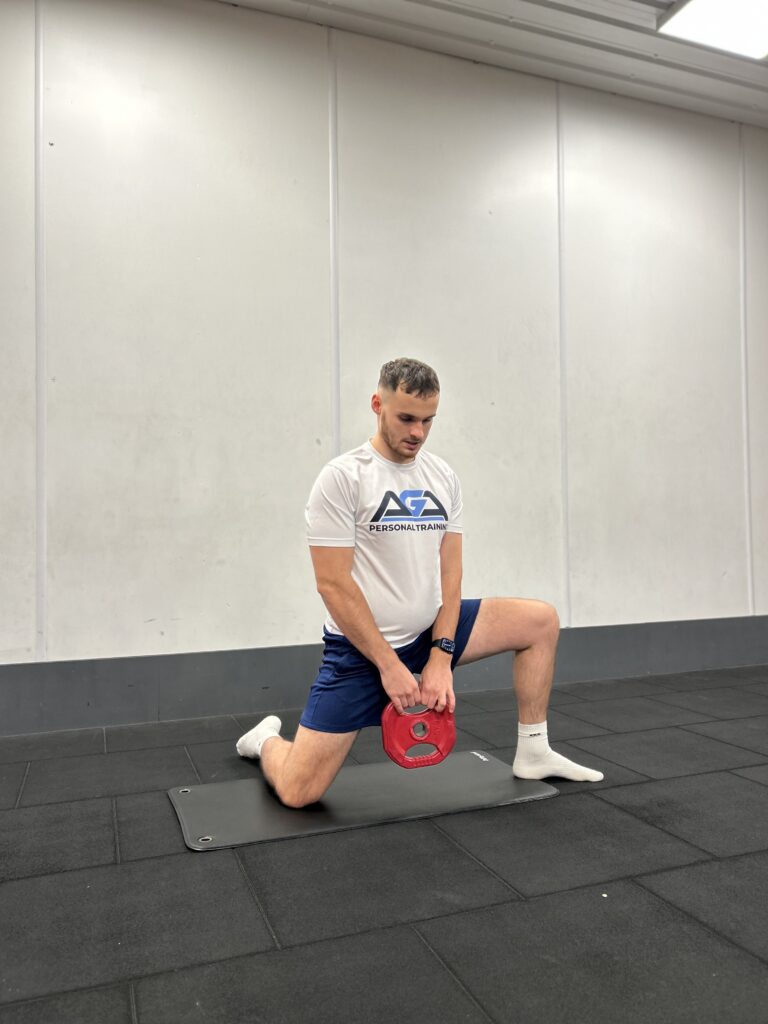
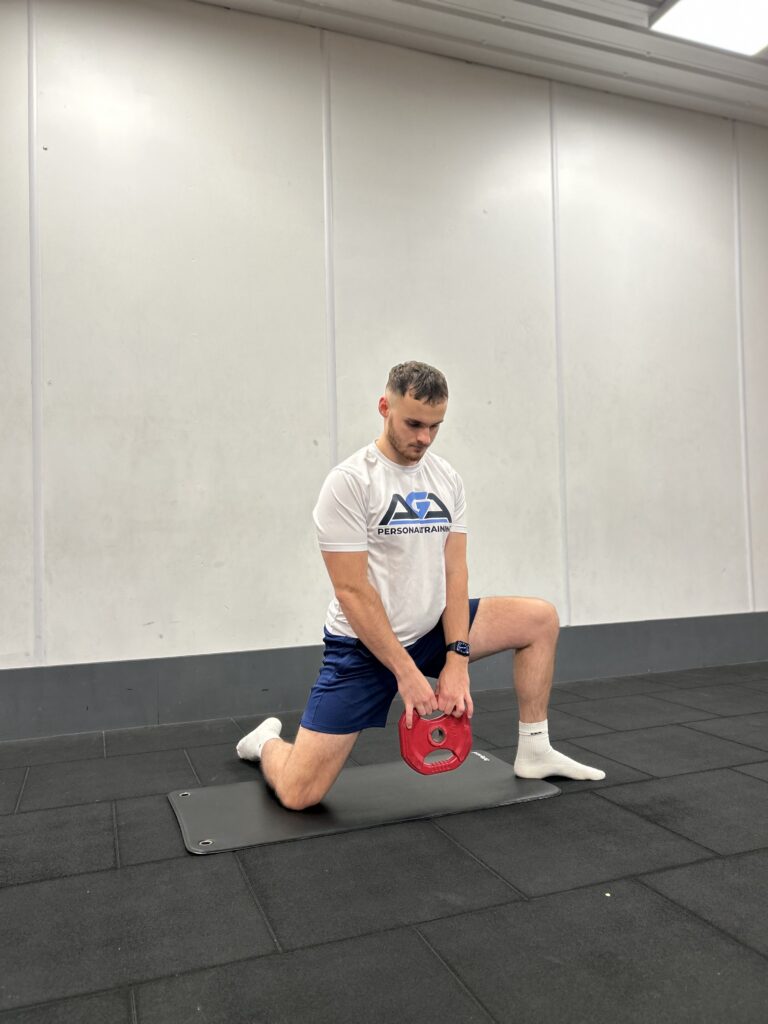
- Standing Hip Opener
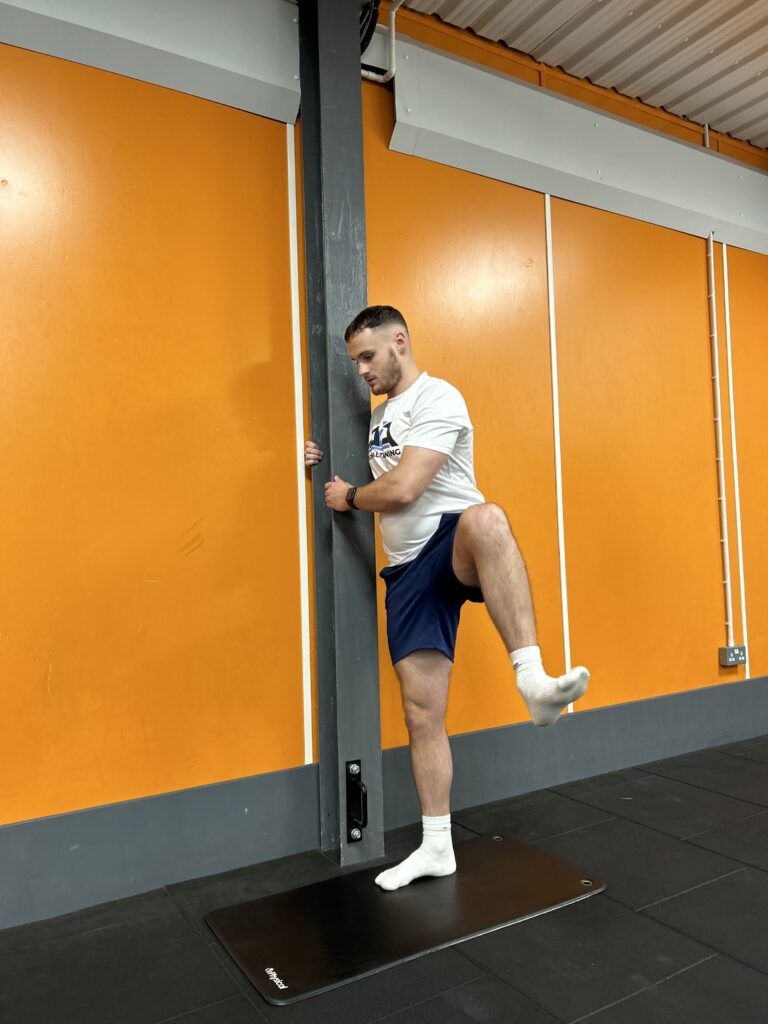
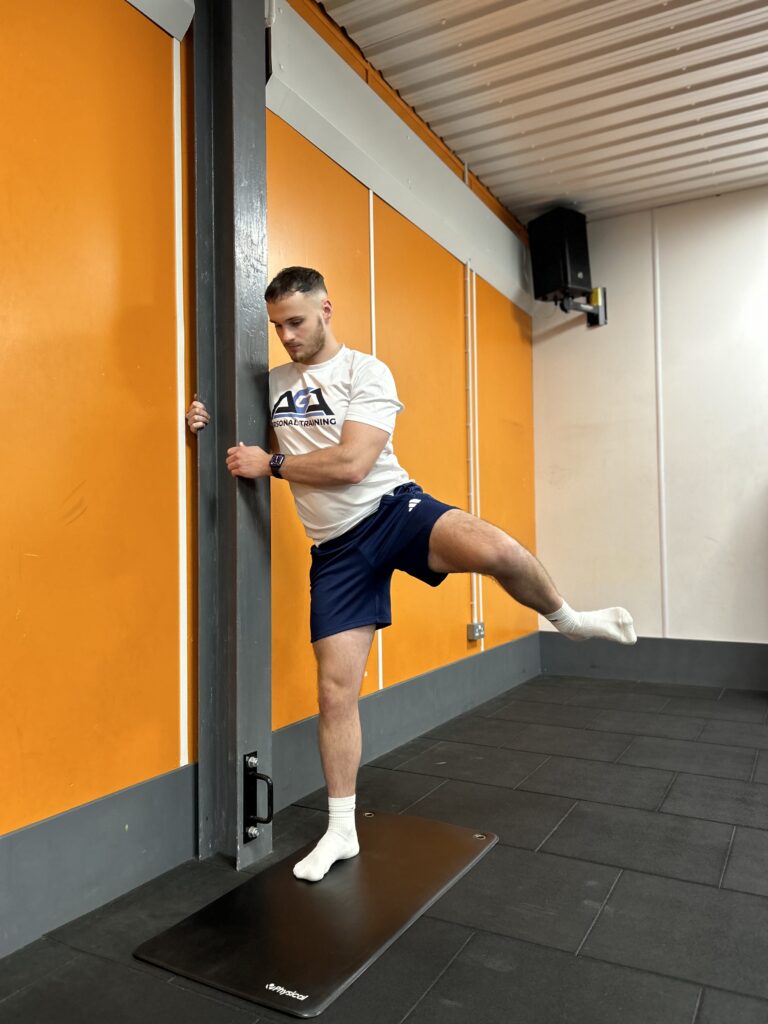
For further advice on knee pain or to get yours assessed, book in at reception!

